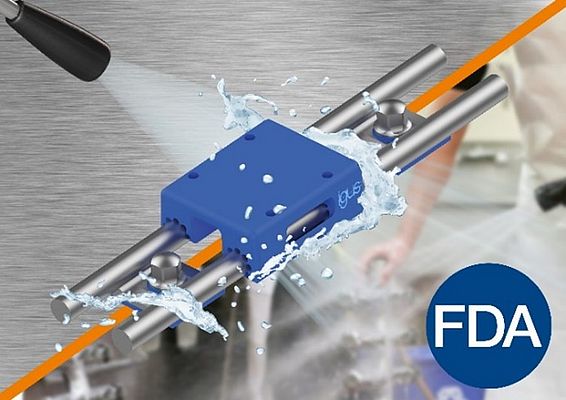Cleaning with chemicals is a daily occurrence for machines in the food processing industry. Even the smallest blind spot can collect moisture and can lead to contamination within the machine. More and more operators are therefore designing parts with an emphasis on hygienic design.
igus, the manufacturer of motion plastics, has developed the first linear guide system, based on the hygienic design guidelines. FDA-compliant materials such as the high-performance polymer iglide A160, high-alloy stainless steel and a washable interior of the carriage ensure compliance with hygienic design guidelines.
Special rules apply in the food, pharmaceutical and cosmetics industries. Hygiene is the highest requirement that is placed on parts within machines. It is important to ensure that there is never any contamination on products. Companies are now demanding self-lubricating components that can be cleaned quickly ensuing downtimes are limited. igus has now developed a drylin W linear guide according to hygienic design guidelines.
A gap-free construction with the right materials
The main challenge was how to construct a gap-free design. The focus was on designing a self-draining carriage and rail that would allow liquids to drain freely without collecting water. This innovation for the linear technology market. So far, most hygienic design solutions have been based on a completely enclosed unit.
The new self-draining carriage consists entirely of the high-performance polymer iglide A160, one of the FDA- and EU10/2011-compliant igus materials. The lubrication-free material has already proved itself as a plain bearing material in numerous applications in the food industry. Hygienic screws and large grooves are also used as a method to prevent water from accumulating and bevelled edges allow cleaning solutions to run off easily. The bottom seal protects the space under the rail from dirt accumulation, ensuring no residues of food can be caught. The shafts are also sealed to prevent any gaps from collecting debris. A corrosion-resistant and high-alloy 316 stainless steel is used as the linear rail to avoid microscopic surface structures that prevent dirt from adhering.


















